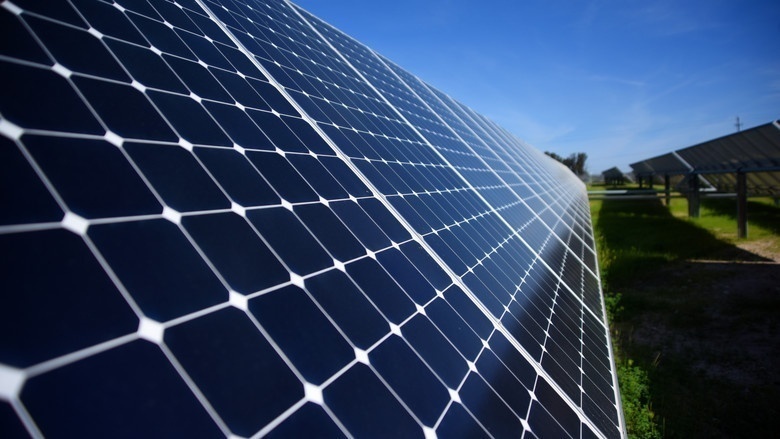
I am an engineer with a Ph.D. in nuclear technology. I worked in the Argentinean National Atomic Commission for fifteen years, researching fluidized beds, boiling channels, and the technological development of nuclear fuel elements and uranium enrichment.
In all these fields, I have performed experiments, numerical and analytical non-linear modeling, and economic assessments. After that, I worked for three years in an oil company leading a research team that (from the laboratory-scale tests) developed the first industrial plant in the world for removing mercury traces in crude oil.
Since the last fifteen years, I have come back to my first “home” (Bariloche Atomic Center) as a national researcher, but now I have become a “renewable enthusiast,” bringing my background in fluid-dynamic and thermal modeling that I have used in all previous fields and my expertise as an inventor and “writer of scientific papers.” This last point is key in order to survive in a research center. I have total independence, but almost no funds.
First, I developed an advanced flue-draft natural gas heater for space heating and several prototypes of innovative thermoelectric devices. Simultaneously, ten years ago, I published my first articles in solar, proposing an innovative solar roof for household heating and cooling [1,2]. This, together with an innovative configurable awning [3], are more than just designs related to solar architecture, they have shown that up to today there are deeply rooted paradigms in architecture.
Furthermore, going through solar-thermal technologies, I have realized that there is a general lack of fluid-dynamical behaviors. There are architects trying to integrate “solar ideas” with houses, but without this background, most of them only put “solar devices” onto standard houses, even considering the “solar contests” framework (by the way, I have many “revolutionary ideas” if some team wishes to invite me). In this way, recently I have presented a very simple idea for improving thermal insulation in walls [10].
On the other hand, physics experts have traditionally led the development of solar collectors, but they also lack a fluid-dynamic background. Most physics have studied fluids up to the incompressible flow (the Bernoulli’s model) and not at all within the turbulent flows in which most of Nature’s and technological systems are. In this sense and as I had pointed out in a recent publication [4], it is very common to see that the design of thermosiphon collectors avoid their hydraulic loops, which are a main part of the collector performance.
Understanding this key point, I have proposed some new design of low-cost solar collectors based on storage collectors (instead of thermosiphon collectors) [5-9], including a very innovative one, which is the pulsed-flow solar collector [9] that uses a smart control for improving its performance. The pulsed-flow collector takes advantage of both the storage collector (and its high efficiency) and the thermosiphon collector (with its ability for storing hot water during the night).
Recently, I have demonstrated [11] two points: 1) the standard efficiency curve (a second-order function) is physically meaningless, and instead, I proposed to use a fourth-order function, which represents the conduction-convective heat losses (by the linear term) and the infrared radiation heat losses (by the fourth-order term); 2) the collector’s overheating must be studied by considering its dynamical steady-state behavior. In this way, I have found that this overheating concern could be solved by using vacuum tubes of higher emissivity.
For the future, I am developing a new exciting design for solar collectors and solar cookers. As an isolated researcher, I hope this presentation can help me to get some collaborative works. Let’s do it!
These findings are described in the article entitled Modified vacuum tubes for overheating limitation of solar collectors: A dynamical modeling approach, recently published in the journal Solar Energy. This work was conducted by Luis E. Juanicó from CONICET and the National University of Comahue.
References
- Juanicó, L. 2008. Innovative Solar Roof for domestic heating and cooling. Solar Energy, Vol. 82 (6), pp. 481-492, Ed. Elsevier.
- Juanicó, L. 2010. New Design of Solar Roof for Household Heating and Cooling. Int. J. of Hydrogen Energy, vol. 35 (11), pp 5823-5826, Ed. Elsevier.
- Juanicó, L. 2009. A new design of configurable solar awning for managing cooling and heating loads. Energy and Buildings, vol. 41(12), pp. 1381-1385, Ed. Elsevier.
- Juanicó, L., Di Lalla, N. and González, A. 2017. Full thermal-hydraulic and solar modeling to study low-cost solar collectors based on a single long LDPE hose. J. of Renewable & Sustainable Energy Reviews vol. 73, pp.187-195, Ed. Elsevier.
- Juanicó, L. 2012. New configurable low-cost solar roofs: developing a new paradigm for more sustainable houses. Recent Patents on Engineering, vol. 6 (2), pp. 137-148. Ed. Bethan Science, China.
- Juanicó, L. and Di Lalla, N. 2013. A New Low-Cost Plastic Solar Collector. ISRN Renewable Energy, doi:10.1155/2013/102947. Hindawi Publ.
- Juanicó, L. and Di Lalla, N. 2014. Optimization of the hose-based low-cost solar collectors. Int. J. of Renewable Energy & Biofuels, doi: 10.5171/2014.344621. Ed. IBIMA Publishing, Pennsylvania, USA.
- Juanicó, L. and Dilalla, N. 2014. The vertical-tube solar collector: a low-cost design suitable for temperate high-latitude locations. J. of Solar Energy, Hindawi Publ., doi:10.1155/2014/807989.
- Juanicó, L. and Dilalla, N. 2016. The pulsed flow design: a new low-cost solar collector. Renewable Energy vol. 87 (1) pp. 422-429, Ed. Elsevier.
- Juanicó, L. and González, A. 2017. Thermal insulator with multilayer of air gaps: performance, costs and embodied impacts. J. of Buildings Engineering vol. 12, pp. 188-195, Ed. Elsevier.
- Juanicó, L. 2018. Enhanced features for vacuum-tube solar collectors, a new design proposal. Solar Energy vol. 171C, pp. 804-810, Ed. Elsevier.








